Bell Sound – A Legacy of Looking Ahead
It feels like home.
Bougainvillea climbs over the green metal gate, encircling bright blue lounge chairs and a wrought iron table set, picturesque, against the brick patio.
The doors are heavy and elegant. Someone always rings the buzzer, but the door at Bell Sound Studios is always open.
Barbara sits behind the front desk and greets you the way a friend would. The kitchen has an unnecessary amount of goodies, from a chic espresso machine, soda dispenser and overly stocked fridge/freezer to bowls of fruit, candy, chips and bagels.
People mill about in the lobby. Voiceover actors go over their lines, musicians their parts. Producers and engineers banter over freshly brewed coffee.
A couple of techs sit in the dub room, checking slates, designing, and printing, laying back, burning.
Also off the lobby is Studio D, now primarily used for video post. Studio A and Studio B are up the hallway, the former housing a Neve 8232 console and the latter having been built as a copy of the Beach Boys studio at EastWest.
The long wooden kitchen table and a bookcase filled with candy and vintage recording gear flank Studio X‘s door. This is sometimes referred to as “Studio C,” but John prefers it to be known as the “Experimental studio,” a name that parallels his passion for new ideas and creative innovation.
Inside Studio X, John Osiecki, part owner of Bell Sound, sits cross-legged in a big leather chair.
Sconces with flickering LED candles line the wall, and another big leather chair sits ready to envelop whoever sits there. It is, without a doubt, the coziest studio I’ve ever been in.
Years ago when I began my pro audio career here at Bell Sound, staffers would be beckoned to these cloud-like leather chairs, periodically, just to talk. John would ask us how things were going, how we felt about the studio, the clients, the direction and perhaps most importantly, he would ask us what ideas we had.
It’s a simple thing, but also perhaps a key to Bell Sound successfully adapting with the changing shifts of a volatile industry. The studios have been operational for almost 50 years now – and that kind of longevity does not happen because of any singular vision.
EVOLVING THE BUSINESS
Back in the summer of 1973, owner Bill Bell didn’t want to let go of 19-year-old John, who had shown an impressive work ethic, even for a ‘kid’ holding a minimum wage summer job.
But John had plans to begin work for a new computer company, so Bill had to barter with him. Offering him a raise from $1.65 to $5/hour wasn’t enough. So, he threw in the company’s brand new 911S Porsche Targa.
“And guess what happens when you offer a 19-year-old kid that deal?” John asks with a smile.
Bill was willing to take chances like that, to invest in people and ideas.
“When he opened Bell Sound in 1965, pretty much every other LA studio was doing rock ‘n roll. There were very few studios doing commercials because all the ad business was in NY/Madison Avenue and Chicago and Detroit.”
It turns out, however, that because of Bill’s extensive work as a popular radio DJ, he was able to offer ad agencies something that they had previously thought was entirely off limits: celebrity voiceover artists.
“An agency in Detroit called Bill and said we’d like you to cast for a spot that we’re doing and we want a Gary Owens sound-alike, and Bill said, ‘why don’t you just hire Gary Owens?’”
While Bell Sound became quite successful in the voice over world, Bill wasn’t satisfied with a stagnant success, so he brought people into the fold that were tech savvy and forward thinking.
After updating the studio both technically and acoustically, using the same crew who built United Western (now EastWest) and Ocean Way, Bell Sound integrated more music into their workflow, particularly on the advertising side.
“We did a lot of music in those days and we were working a lot of hours. An easy work-week for me was 75/80 hours. On average, I would start Monday morning at 8:30am and leave Friday into Saturday when the sun was rising. I put in 104 hours, and it was all work. There was no sitting around. It was all session after session after session.”
Composer Don Piestrup was a driving force behind many of these advertising music sessions. Working with studio musicians like Hal Blaine, Tommy Tedesco and Don Randi from the “Wrecking Crew,” Piestrup did jingles for everyone from In n Out Burger and Shakeys to Budweiser, Plymouth and Fanta.
Outside of jingles, Bell had its hand in movie and TV music as well, recording several seasons of the Pink Panther cartoon and music for features such as Fear City starring Melanie Griffith and Tom Berenger, Cheaper to Keep Her starring Mac Davis, and the Chuck Norris films, Force of One and Octagon.
Although these music sessions were a big part of Bell Sound’s identity in the 70s and 80s, the studio maintained an impressive list of clients outside the musical realm. For example, in 1985, George Carlin recorded the HBO special, Drawing on My Mind at Bell. In 1988, an all-star cast of Mel Blanc, Vincent Price, Tony Curtis and Cloris Leachman lent their voices to the cartoon, Sparky’s Magic Piano. Names like Elizabeth Taylor and Orson Welles also came through Bell’s doors to record spots and projects during that time, not to mention politicians such as Tom Bradly, Jerry Brown and Ronald Reagan all using Bell Sound to record campaign material.
During this time, Bell Sound was undergoing some shifts in ownership. Don Piestrup, along with colleague Sandra Marshall, bought the studio in 1983 as it came upon a rough patch. Six years later, in 1989, John became part owner, buying out Sandra. Today, Don Piestrup and John co-own Bell Sound 50/50.
Despite shifts in ownership, management and a tumultuous and ever-changing industry, Bell weathered this and other bumps in the road thanks, in large part, to the staff.
“Instead of just being an engineer, Bill emphasized to me and anyone who worked for him that if you wanna work as an engineer, go somewhere else because here, you have to be involved in the creative process,” John says.
And that meant not only assisting creatively in sessions when needed but also assisting creatively in the direction of the studio.
When the home studios started popping up in the 90s, John started a sound design company with one of his employees.
“It wasn’t a part of the studio but we used the studio. We did sound design for the LA Times and various other companies. We’d hire the studio at full price plus 10 percent for bookkeeping.
“That kept us busy for a long time.
“Also during that time, the other house engineers kept building their business that they were doing with ad agencies; not just voice or mixing, but the entire thing. They were doing everything from casting to running the session and laying it back to picture and delivering the final spot.
That was a little extra piece that other studios weren’t doing.
Our competition then was music studios that were going out of business and production studios that didn’t have the ability to record music and didn’t have the ability to do the video work that we were doing.”
That “little extra” is what has made all the difference at Bell Sound. And it’s something that John keeps in mind when looking at potential employees.
“I need people who say, ‘hey, why don’t we do this? Or can we do this, and so on and so forth.’”
It’s the enterprising staff that has built Bell Sound into a full fledged one-stop production and post production studio, now with an ever growing emphasis on video.
“A good example is when Keefe [Kaupanger-Swacker] started setting up all the video stuff, we became known as a video company. So this company came in here with a whole bunch of video and they cut it all together and they were really happy with it. They said to Keefe, ‘do you know a place where we can get sound put to this?’
And Keefe said, ‘well yeah, this is what we do.’
So we put all the sound to it and they were blown away.
And then they needed this printed to Blu-ray but they needed labeling.
‘Where can we get that done?’
Keefe said, ‘well we do that too.’
They had their logo and we placed it. We printed them a bunch of Blu-rays. They walked out of here with everything done.”
THE PEOPLE MAKE THE STUDIO
John makes it a point to facilitate whatever projects he can, being sure to never fake the capabilities of the studio just to get a client in. What matters most is not the studio itself, or even the specific project, but the relationships built between clients and the studio staff.
“I really believe that the studio is nothing without the right people. You have to have the right people – they make the studio.
Once a person in the studio develops a relationship with a producer outside the studio and they click and good things happen, then the studio disappears. It’s just there as a tool.
“That’s when you really start cranking out good work.”
But John also understands the importance of upgrading and innovating hardware, not just ideas.
“I have to make sure that everyone here has all the tools they need to be able to compete with all the other people doing the same thing.
“So we’re always upgrading and changing – you have to. We try to stay on the cutting edge.”
For Bell Sound, staying on the cutting edge means a multi-faceted approach. Studios A and B are both Pro Tools HDX-equipped with Antelope clocking; and Bell Sound is DG Certified for all HD/SD formats, a stamp of approval that carries quite some weight in the video industry. Scalable fiber-based internet runs throughout the building; authoring and dubbing services are offered in house, not to mention location recording, HD filming, data backup and archiving and post production video and audio services.
Studio D is the newest representation of this hybrid set-up, housing a full audio production system as well as video capabilities ranging from color-correction and titling to editing and compositing.
As for what’s next for the constant innovators at Bell, John is pushing forward with the video while maintaining a healthy musical presence, particularly on nights and weekends with in-house engineer Thai Long Ly working with the likes of Stanley Clarke, Jason Scheff, Chris Coleman and Jack Douglas. Beyond that, digging deeper into computer technology is something high on the to-do list.
“Any new thing that comes up, we try to learn it and apply it to what we’re doing.”
John is always looking for creative self-starters, people he can “turn loose and let them do their thing, whether that be games or what have you.”
With a paradigm that shifts with the ever-changing tides of the entertainment industry, John is steadfast with his philosophy on how to run his studio.
“Anyone can get the equipment but when you have the right people, talented people with the right equipment, and you have them in a place where they feel comfortable and they feel creative, and they don’t feel like they’re being squashed or ripped off, they do better work, and we do better work. And a lot of people see that.”
Indeed, National Geographic, Sony, Disney, Animal Planet and more have brought in talent such as Brad Pitt, Val Kilmer, Heidi Klum, Matthew McConaughey, Ben Affleck and Cameron Diaz to record at Bell Sound.
More recently, LA Mayor Eric Garcetti, used Bell Sound to do his entire 2013 mayoral campaign, including audio and video.
And with more full production film projects on the horizon, Keefe and Bell Sound have put their stamp on works such as the feature film Masterless, the short Resident Evil: Vengeance and the short Sunshine, which won an official selection in the Vail Film Festival.
With a staff flourishing creatively and technically and a compass pointed towards the future, it seems safe to predict that Bell Sound could easily be around for another 48 years.
Eleanor Goldfield is a Los Angeles-based writer, musician and freelance tech and studio consultant. She is lead singer in the hard rock band, Rooftop Revolutionaries, and works with several studios and pro audio professionals in management and consulting capacities. For more info, check out http://www.eleanor-swede.com.
Please note: When you buy products through links on this page, we may earn an affiliate commission.







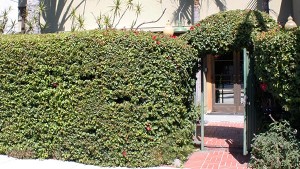
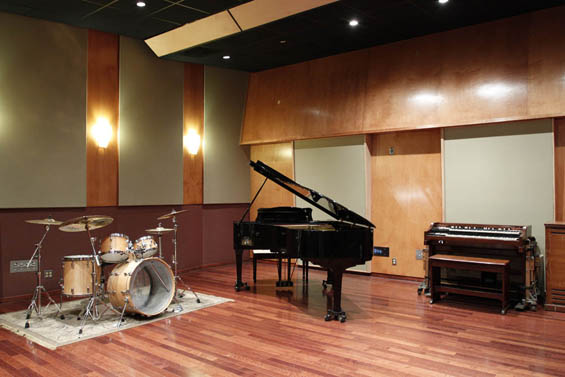
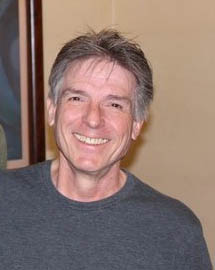
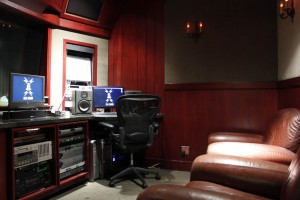
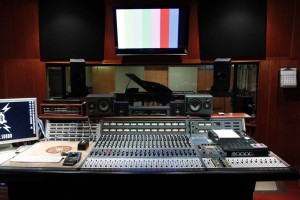
steeba
January 28, 2014 at 10:34 pm (10 years ago)John’s my best friend…thanx…
Steve DePatie
January 28, 2014 at 10:41 pm (10 years ago)No…John’s MY best friend…thanx…!